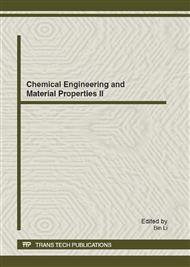p.639
p.643
p.647
p.651
p.655
p.660
p.665
p.670
p.674
Research on Corrosion and Monitoring Methods of Pressure Vessels in Sulfur-Containing Natural Gas Purification Plants
Abstract:
Pressure vessels in high sulfur-containing natural gas purification plants are likely corroded in acid media. Corrosion monitoring and control must be carried out to ensure safety and efficiency of purification system. So corrosion cause and service characters of pressure vessels in the purification plants were analyzed in this paper. The factors which influence pressure vessels corrosion include acid gas load, flow rate, phase state, temperature, heat-stable salts and degradation products. Then adaptability, advantages and disadvantages of the methods such as weight loss hanging slice method, electrochemical monitoring, ultrasonic thickness measurement, etc. were also analyzed in the paper. The results show that current on - line corrosion monitoring methods are hard to be applied in high sulfur-containing natural gas purification plants. Weight loss hanging slice method is an effective approach for pressure vessels corrosion monitoring. The data obtained are reliable and the investment is relatively lower. Based on characteristics of different technology units, corrosion coupon monitoring scheme is established. The research result provides a solid base for ensuring safe operation of high sulfur-containing natural gas purification plants.
Info:
Periodical:
Pages:
655-659
Citation:
Online since:
July 2012
Authors:
Keywords:
Price:
Сopyright:
© 2012 Trans Tech Publications Ltd. All Rights Reserved
Share:
Citation:


